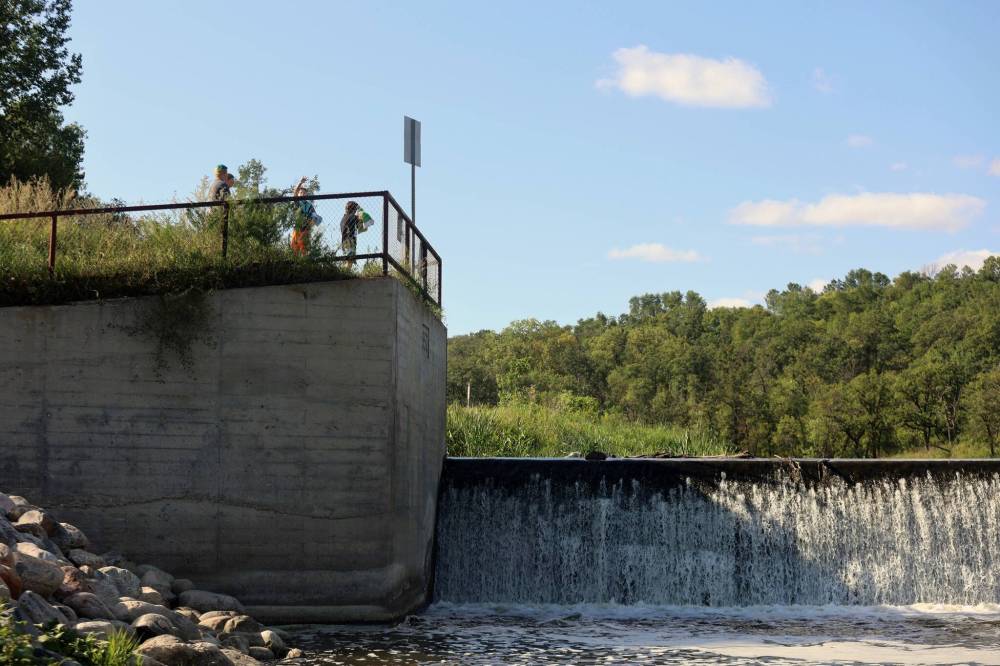Wawanesa dam will be replaced
Advertisement
Read this article for free:
or
Already have an account? Log in here »
We need your support!
Local journalism needs your support!
As we navigate through unprecedented times, our journalists are working harder than ever to bring you the latest local updates to keep you safe and informed.
Now, more than ever, we need your support.
Starting at $15.99 plus taxes every four weeks you can access your Brandon Sun online and full access to all content as it appears on our website.
Subscribe Nowor call circulation directly at (204) 727-0527.
Your pledge helps to ensure we provide the news that matters most to your community!
To continue reading, please subscribe:
Add Brandon Sun access to your Free Press subscription for only an additional
$1 for the first 4 weeks*
*Your next subscription payment will increase by $1.00 and you will be charged $20.00 plus GST for four weeks. After four weeks, your payment will increase to $24.00 plus GST every four weeks.
Read unlimited articles for free today:
or
Already have an account? Log in here »
The new Wawanesa dam design was announced this month, along with a construction timeline that will see the previous 1939-built dam destroyed in the next three years.
Engineers from the Province of Manitoba and a private company, KGS Group, were in Wawanesa for a council meeting and open house meeting last week to inform residents. The province announced that it has chosen the design to be a new concrete structure downstream from the existing dam, and said the bulk of construction is expected to take place in the fall of 2027.
The news comes as a milestone for the community of Wawanesa, which has been on the radar for a dam repair with discussions going back to 2018, Municipality of Oakland-Wawanesa head of council Dave Kreklewich said.

Shaun Moffat, who worked to assess and mitigate environmental impacts for the upcoming Wawanesa dam, discusses the project with resident Simon Ellis, who lives nearby, and Laura Robson, an engineer for the Province of Manitoba. (Connor McDowell/The Brandon Sun)
“For me, it’s peace of mind knowing that it’s going to get done,” Kreklewich said. “It’s there now, it’s cast on paper … it’s going to start.”
The dam repair has always been in the back of the municipality’s mind, he said. The announcement from the province last week comes as an assurance.
“It just seemed that everything was operating in the background, and we were left sitting wondering, is this going to happen?” he said. “That changed over the last year.”
“I am happy that it has crossed this line.”
The primary motivation for addressing the dam is to protect the community’s drinking water, Province of Manitoba project engineer Laura Robson told the Sun last year. If the dam were to fail, it could jeopardize the Wawanesa reservoir upstream.
Representatives from the Province of Manitoba at the November open house said construction may begin as early as January 2027 if all goes according to plan.
The construction may finish in late 2028 or extend into 2029, depending on several factors such as the weather, staff said. Dry weather would be best for fast construction.
The dam design beat out four other models because it prioritized cost and public safety, engineers told the Sun. The five factors that were weighed against each other to decide on the dam model were: constructability, life cycle maintenance, environmental impacts, public safety and cost.
Oakland-Wawanesa’s head of council Kreklewich said the chosen design was the one he hoped would win.
“Thats the one I had picked, that I thought would be the best for the community,” he said.
Kreklewich highlighted two benefits for this design: the old dam can operate while the new one is being built (so that the community’s water supply won’t be lost during construction); and secondly, the new dam will be further away from the community’s campsite, so the campground is more peaceful.
He added that the design is free of a safety hazard — a pile of rocks on the downstream side that was part of other models. Kreklewich said he worried that would have become slippery at points of the year and been a risk for children.
“It would be attractive to kids, and at the same time a safety hazard,” he said.”I could see problems all over the place.”

This possibility was eliminated through the design that the province selected, he said.
Robson, the province’s project engineer, told the Sun that safety came up as the most-cited factor that the public wanted to be prioritized by the new dam design.
“I would say public safety was something that came up over and over again,” she said. “It was a major factor.”
Mavis Brown, a longtime resident, said she was happy with the province’s process.
“It sounds like they are really listening, and taking the community’s comments,” Brown said.
Brown said that the feedback she provided has been reflected in the final decision-making. The grandmother submitted input during the consultation phase last year. Brown wrote that public safety was her top priority, closely followed by protecting the fishing potential at the dam.
She has fished as a tradition in raising children and grandchildren in Wawanesa, and has been a resident since 1978. Brown and her husband’s input was one of roughly 20 written submissions that the province received during a consultation meeting last year. Her husband made the note that safety was paramount.
“He wanted all the kids to be able to fish there safely,” she said.
The fishing tradition was also cited by another resident, Simon Ellis, who said his kids will likely go to fish in the area. He said he did so as a kid, and will likely pass the torch. Ellis said he thinks the province did a good job analyzing the pros and cons and planning for the short and long term.
The Wawanesa dam was originally built in 1939. It was enlarged in 1951 and underwent major work in 1991. The dam’s future became uncertain in recent years, following dive inspections that found a scour hole, evidence of other damage and erosion, and signs of leakage in some areas.
Several repairs have been done since 2011, including rehabilitating the north bank of the river, replacing riprap, and installing steel guides and stoplogs as a temporary measure to repair a notch in the dam’s crest.
The dam serves the important job of keeping water levels high enough in a reservoir on the Souris River so that the community of Wawanesa can gather its water supply.
The province’s goal is for the new dam to have a lifespan of about 50 years. This could be influenced by any future fluctuations in funding for maintenance.

Ecological work had to be done in the area to get approval for the work, said Shaun Moffat, who helped organize assessments in the area with KGS Group. Moffat said that assessments had to be done to see if construction would impact vegetation, wildlife, birds, fish and amphibians in the area.
A crew explored the construction area to take stock of species like the pileated woodpecker, Moffat said. Fortunately, there were no cavities, the bird’s home, or any other highly sensitive at-risk species, identified in the impacted area, he said.
“From a terrestrial perspective, this project has little to no environmental concern,” he told the Sun. “The vegetation was previously disturbed and there was no protected species.”
Heritage sweeps were also conducted by digging holes with shovels to see if materials, such as pottery, would be found, engineer Joe Friesen said. If something was found, it would trigger a pause in the project.
The first sign of construction the public will see is the digging of a water bypass,
The public will be able to see the project come online by the first obvious sign of construction work, digging a water bypass, Friesen said. A channel will be cut into the land beside the Souris River, so it can flow in a detour around the construction, he said.
Looking to the future, head of council Kreklewich said he likes that the province’s chosen design will be more durable than the others. Other designs would need maintenance on a yearly or bi-yearly basis, he said, which would mean ongoing disruptions in the community. This would have been the case if stones were used that could be displaced by water and ice flows, he said.
Kreklewich said that there is no reason to believe that dam construction set for 2027 will cause the closure of the community’s campground or outdoor swimming pool, which are located next door. He said there is bound to be “a lot of traffic, a lot of workers, a lot of noise,” but ultimately, that will be the extent of disruptions.
Kreklewich said he has also offered a new route to be used to bring heavy equipment and machinery to the site when construction phases begin. This would reduce impacts on houses in the area that would see movement under the province’s current plan, he said.
» cmcdowell@brandonsun.com
